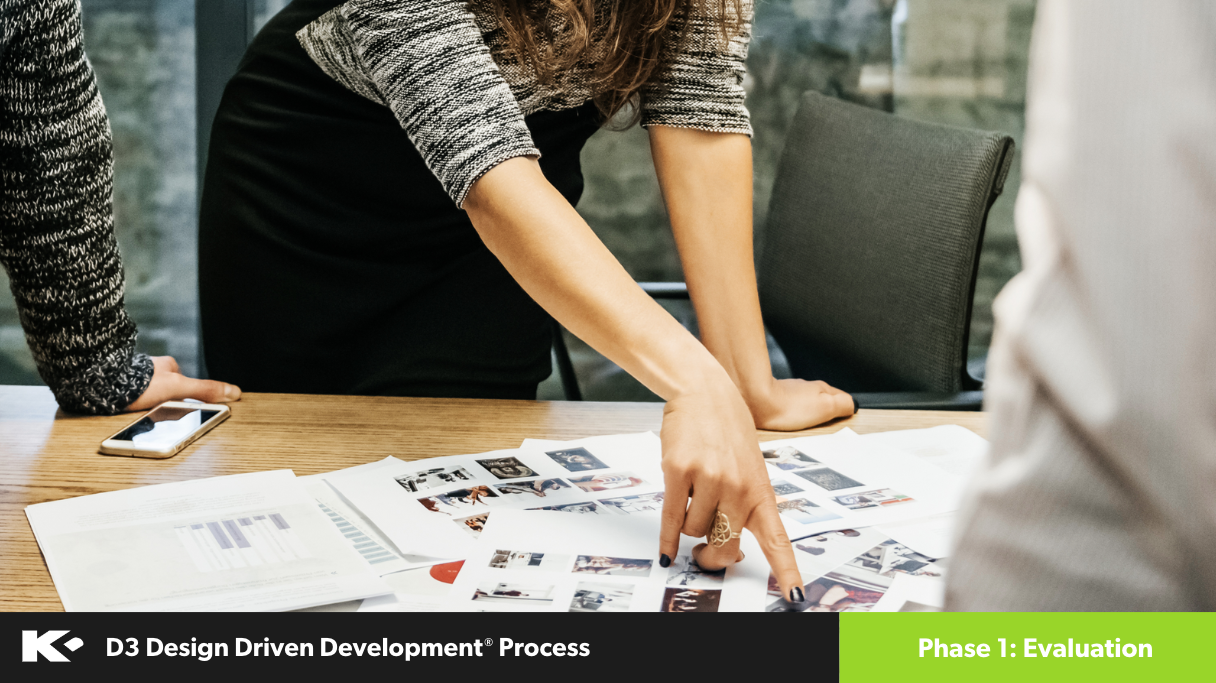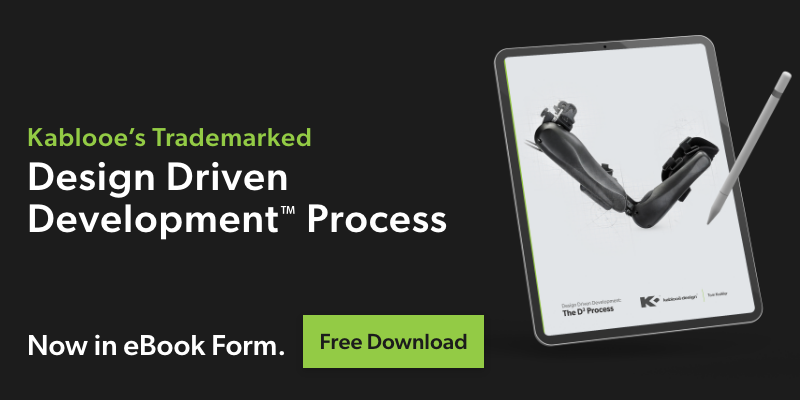Product Evaluation: A 5 Step Breakdown

Product evaluation and assessment is a complex process. You need to properly assess any new product idea or concept before it becomes a reality—but this necessary phase can be especially overwhelming if you don’t know what to do or where to begin.
The good news is, thanks to our trademarked Design Driven Development Process, there are clear steps all product developers should follow when evaluating product market fit. Today, we’re going to look at exactly what those five steps are so you can evaluate your potential product idea with confidence.
Product Evaluation in 5 Steps
By breaking down the Product Evaluation Phase into five simple steps, product developers can quickly and easily determine whether their new offering is worth further exploration or if it needs revisiting to make certain improvements. To accomplish this, your design-led, cross-functional team should methodically work through the following five steps.
1. Financial Review
To form a preliminary understanding of the opportunity that exists, your Management Team should first conduct a full financial review. This involves evaluating how much money you need to develop and launch your product, how long it will take to break even on costs, and any other financial obligations associated with launching a product.
In a financial review, you should look at the following:
- Costs of goods sold
- Market tolerance for item costs in your product category
- Capital investments
- Manufacturing costs
- Potential returns
The Design Team will also be involved in this process by assisting in the creation of projection costs for development, prototyping, and production.
2. Competitive Product Assessment
At the same time as the financial review, the Marketing Department should be hard at work analyzing the market in terms of competitive space. This involves looking for those “white areas” where opportunity may lead to a product idea with a novel attraction to the users and a strong intellectual property potential.
Determinations need to be made regarding:
- The nature of your particular market
- If the competition is too strong to compete effectively
- If the market is the correct size for an eventual return on investment
The Design Team should assist Marketing with these steps by discovering competitive units and evaluating the strength of their product designs. Designers may also create opportunity maps, value proposition options, positioning strategy charts, gap analysis research, and design language maps.
3. Early Risk Assessment
During the Product Evaluation phase, your Research and Development department will be conducting an early risk assessment. This assessment will help guide the core team in weighing the pros and cons for the further advancement of the development project. In this step, you will attempt to identify dangers to the success of the project in many different areas.
These “danger” areas may include:
- Technical feasibility
- Timeframe feasibility
- User safety
- Compliance
- Threats from users, competitors, and the physical/market environment
Like the previous two steps, an early risk assessment should be done in close conjunction with the Design Team so they can offer up additional risks from their unique point of view.
4. Legal/IP Analysis and Findings
While your Management, Marketing, and R&D teams are all hard at work, your Legal Department will likely feel slightly left out. This is good because you will need them to do a preliminary search of your area’s current intellectual property (IP) landscape, looking for clutter and enticing opportunities. Essentially, Legal’s goal should be to develop a very early opinion on whether or not there is room for you to be playing in the space.
Once again, Design should be involved in this process by reviewing Legal’s findings and investigating the most closely matched ones. They can then offer their expert opinion concerning the viability of a new product being developed in the market.
5. Regulatory Pathway Investigation
At this point in the Evaluation Phase, your Regulatory Department must also determine if there is sufficient room to operate in the space. This involves confirming that reimbursement codes exist for your potential product to fit into and that there’s a clear regulatory path to follow.
The Design Team may assist in these activities by offering potential characteristics of concepts to see if they would fit into the overall strategy. And, inversely, examining that strategy to help form more fitting solutions that will come into play later on in the Design Driven Development process.
Product Evaluation Decisions to be Made
Before moving on to the Research Phase of product development, four key decisions need to be made by your team. In our Design Driven Development process, we call these “Gate 1 Decisions” because you can’t (or at least, shouldn’t) move on to greener pastures without determining them first.
- Is your potential product financially viable?
- Is there a sufficient market opportunity?
- What is the basis for competition?
- Is your technological, regulatory, and IP approach feasible?
Design Your Product for Success with Kablooe
As you can see, the Product Evaluation phase is a critical step in the Design Driven Development Process. It’s important to ask the right questions and assess each aspect from multiple perspectives. By properly evaluating product market fit and involving all stakeholders—including the Design Team—early on in this process, you can set yourself up for success as your product moves toward launch.
As long as the necessary questions are answered and all ‘phase gates’ are achieved during Product Evaluation, you can move on to the next phase with confidence that you have laid out a solid foundation for your Product Design Process. To learn more about our trademarked Design Driven Development Process, download our FREE eBook. Or, explore the next phase in the process by checking out our 9-Step Guide to Product Development Research.

